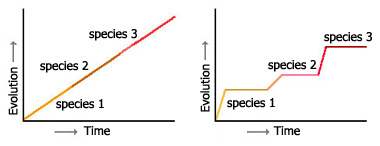
The two years 1177 BCE and 1676 CE would appear to have nothing in common. The impetus for their juxtaposition is the article “The Rising of the Indians”; or, The Native American Revolution of (16)’76” by Margaret Ellen Newell in William and Mary Quarterly 80 2023:287-324. While reading the article, I discovered that many of her observations also applied to Biblical studies even though the article is strictly about American history.
Here are some of the information that spurred me to see a connection.
On the subject of the “ill newes of the dayly Devastations made by the Indians,” Governor Jonathan Atkins of Barbados feared for the future of the empire. In April 1676, he penned a letter not just about events in New York and Virginia but New Spain and the Caribbean as well. He and others saw these Indian insurrections as a linked rather than as separate events. Collectively they threatened the empire. Even more so if Africans joined with the Indians. When the colonial leaders met, they expressed a real fear that they might be pushed out of the Americas.
Newell observes that European observers failed to perceive most of what went on in Indigenous societies and networks.
The conceptual failure was not theirs, then, but ours: scholars have not highlighted the simultaneity of Native American risings across the Western Hemisphere (288).
Instead of seeing the big picture the focus has been on Virginia, Maryland, Pennsylvania, New York and New England. Whereas the Haudenosaunee failed to expel the French, the Pueblo Revolt of 1680 was “the greatest and most successful rebellion of its sort in North American history” (289).
Newell observes:
…unspoken assumptions about the futility of Indigenous resistance to settler colonialism haunt the historiography of eastern North America and the Caribbean, distorting the contingency of colonialism that Atkins felt so viscerally (289).
Hence Newell’s reference to the concept of the Native American Revolution of 1676.
This model “challenges the current literature’s chronological and geographic boundaries” (290). So whereas a given conflict might be deemed a failure, a broad lens risks homogenizing individual events. The “’creeping genocide’” of colonization created a common set of challenges (291). Instead we should see the “conscious creation of multiethnic, multinational, and even multiracial coalitions and communities that became characteristic of many Native nations in this period” (292).
Paradigms have changed. Research on Spanish colonization challenges the concept of conquest. Instead there is failure outside Indigenous urban areas. There was constant resistance and containment (293). A “broader lens reveals that Native Americans responded to each other’s resistance movements in a dynamic fashion. The Pueblo uprising in 1680 and the1676 insurrections had an earlier history leading to those events. And, of course, there was always the possibility of slave revolts as well.
After surveying the interrelated actions of 1676, Ewell declares:
The concept of a Native Revolution of 1676 helps us reframe European-Native American relations and the colonization project in important ways (316).
She then describes these changes. Included are the longterm alliances among multiple groups and the creation of the more formal Wabanaki Confederacy in New England. Such group entities helped renegotiate the boundaries between the various Indian nations and the colonizers. These pan-Indian, multiethnic, and multiracial configurations encompassed huge swaths of land during the late 1600s and early 1700s. Ewell calls this development among the most ignored and thus most in need of further research (322). She challenges scholars to reframe, redevelop, and rewrite the histories based on the concept of the Native Revolution of 1676.
Something similar happened in the land of Canaan. Think of the coalition against Thutmose III. Or the multiple coalitions against Shalmaneser III. What about in-between? Did the Canaanite tribes organize against Egyptian imperialism the same way New England tribes organized against Europeans or the Haudenosaunee did in New York? In the past, I have referred to a NATO alliance led by Israel against Egyptian imperialism in 1177 BCE but the phrase Canaanite Confederacy works just as well. This is not an amphictyony (or conquest) but a coming together on multiple Canaanite tribes with a shared goal of freeing the land of Egyptian imperialism. The moment is remembered in the original Song of Deborah where Ramses III-se-se-Sisera is smited by a wilderness female, a complete reversal of Egyptian royal iconography and the era of Thutmose III is brought to an end. In the Song we have a primary source record that can be analyzed the same way the reliefs of Ramses III are.
SILOS
Some of these concerns expressed by Newell were echoed in a letter to Perspectives on History published by the American Historical Association.
With many important exceptions, we as a discipline have fallen in love with too many small, specialized topics. We write too much for each other, compounding this frequently with theoretical constructs that largely repel the uninitiated. With important exceptions, we hew too fiercely not only to single-region frameworks but to rather rigid periodization….
And we need more efforts… too reach out to that elusive beast, the general reading or podcast-consuming public (Stearns 4).
A similar problem has been detected in African studies:
…historians have backed themselves into their respective cul-de-sacs…Given the nature of disciplinary specialization it is not always possible for scholars to cross the national and imperial boundaries that from historical studies…African history is defined by the presence or absence of Europeans (Child 326,328,329)
Leonard-Fleckman warns us:
We cannot advance methodologically if we do not break out of the siloed discussions that we so often have, discussions often organized around the geographical regions where we live and work, the spaces in which we are trained, and/or the narrowness of our interests and areas of specialization (309).
Louise Hitchcock writes about Eric Cline working across multiple regions.
Most Aegean scholars have not studied the history and archaeology of Egypt, Anatolia, Mesopotamia, or Cyrus and the Levant…The message sent to graduate students is that they need to absorb the vast amount of data in the classical world to get a job… (200).
She advocates more collaborative efforts such as a panel at an international conference followed by a handbook. Cline concludes his brief Rejoinder with:
But I am also helpful that there will indeed be additional collaborative research building within the scholarly community, perhaps along the lines of the solid and interesting recommendations made by Louise Hitchcock (204).
In his abstract for the 2024 ASOR conference, Garfinkle writes:
The Journal of Ancient Near Eastern History was created in part to challenge the traditional cultural, geographical, and chronological barriers that divide the study of the ancient world into a series of regional specializations that often discourage broader, and more interdisciplinary conversations.
As it turns, there is an individual who defined Biblical Archaeology in such a way as to eliminate all geographical and chronological silos, William Foxwell Albright. In the Whidden Lectures for 1961 published in 1966, he said:
Biblical archaeology covers all the lands mentioned in the Bible, and is thus co-extensive with the cradle of civilization. This region extends from western Mediterranean to India, and from southern Russia to Ethiopia and the Indian Ocean. Excavations in every part of this extensive area throw some light, directly or indirectly, on the Bible (1966b: 1).
In the Rockwell Lectures in January 1962, also published in 1966, he said:
The term “biblical archaeology” may be restricted to Palestine, or it may be extended to include anything that illustrates the Bible, however superficially. Accordingly, I shall use the term “biblical archaeology” to refer to all Bible Lands—from India to Spain, and from southern Russia to South Arabia—and to the whole history of those lands from about 10,000 B.C., or even earlier, to the present time (1966a: 13).
Today, it would be difficult for any individual to grasp the knowledge in all the chronological and geographical areas identified by Albright. Also there are new technologies for extracting information from the past. The sessions at ASOR and SBL reflect the narrowing of focus. One cannot attend all the sessions offered. One cannot read all the journals which are published. One cannot read all the books which are published. The challenge is much greater now and this excludes related organizations like AAA, AIA, and ARCE. I confess I don’t know what can be done to address these conditions or how to bring such understandings to teachers and the general public.
There will be an education outreach roundtable during lunch at ASOR. Stop by if you have something to contribute.
BIBLIOGRAPHY
Albright, William Foxwell, Archaeology, Historical Analogy, and Early Biblical Tradition (Baton Rouge: LSU Press, 1966a).
Albright, William Foxwell, New Horizons in Biblical Research (London: Oxford University Press, 1966b).
Child, Mott D., “The Roots and Routes of African Religious Beliefs in the Atlantic World,” William and Mary Quarterly 80 2023:325-351.
Cline, Eric, “Rejoinder: A Brief Response,” Journal of Eastern Mediterranean Archaeology and Heritage Studies 10 2022:203-204.
Garfinkle, Steven, “So, What if the Ancient World Had No Boundaries? Thinking about and Publishing for an Antiquity without Borders,” ASOR 2024 abstract.
Hitchcock, Louise, “There Really Are 50 Eskimo Words for ‘Snow’”: 1177, Big Data and the Perfect Storm of Collapse,” Journal of Eastern Mediterranean Archaeology and Heritage Studies 10 2022:200-203.
Leonard-Fleckman, Mahri, “Histories of Ancient Israel: Present State and Future Potential – A Review of Recent Works by Christian Frevel and Bernd Schipper,” Vetus Testamentum 74 2024:303-310.
Newell, Margaret Ellen, “The Rising of the Indians”; or, The Native American Revolution of (16)’76,” William and Mary Quarterly 80 2023:287-324.
Stearns, Peter N., “To the Editor,” Perspectives on History 62:5 May 2024:4






